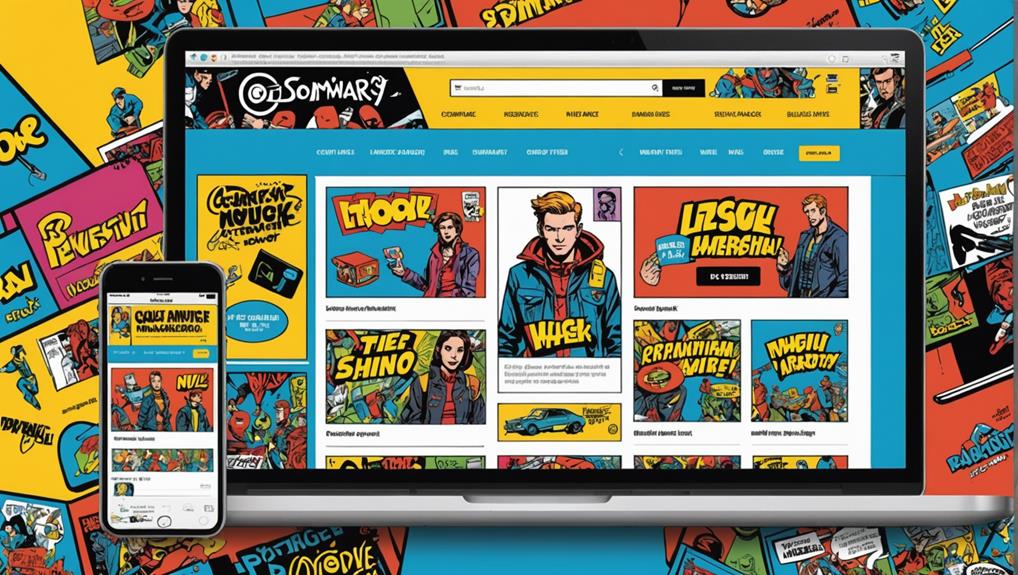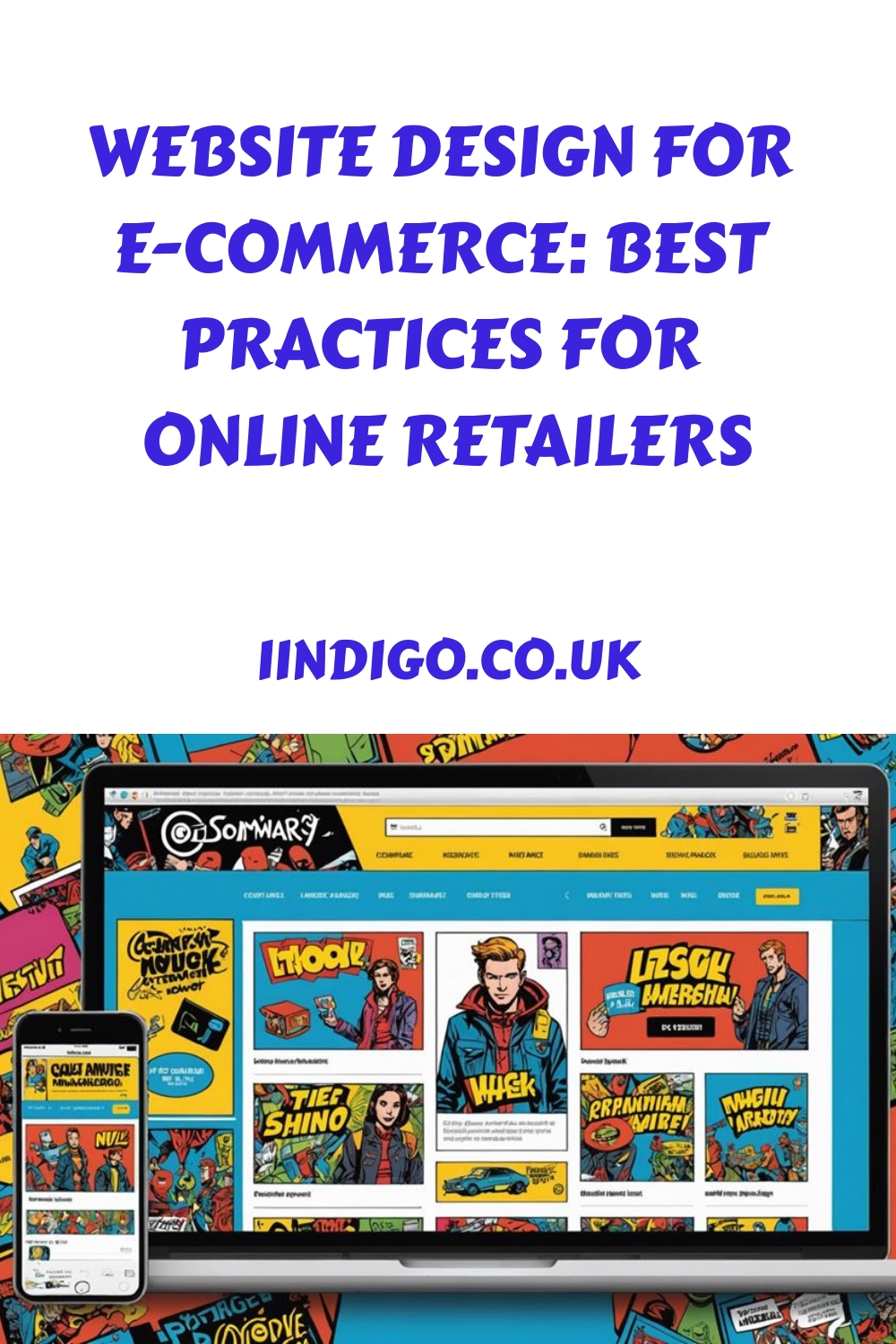
For e-commerce success, focus on effective website design. Start with hero product photos that capture attention and build trust. Streamlined navigation helps customers find what they want easily, boosting satisfaction. An optimized checkout process can considerably reduce cart abandonment, which is a common challenge for online retailers. Don't overlook the power of customer reviews; they can increase sales dramatically. Also, make sure your site works well on mobile, as many shoppers use their phones. By implementing these best practices, you'll create an engaging online experience that encourages purchases and keeps customers returning for more support and inspiration.
Key Takeaways
- Utilize high-definition hero product photos to enhance user experience and increase conversion rates.
- Implement a simplified navigation structure with clear categories to improve product discoverability and reduce cart abandonment.
- Encourage customer reviews and testimonials to build trust and credibility, significantly boosting sales potential.
- Optimize the checkout process by limiting form fields and offering guest checkout to reduce cart abandonment rates.
- Ensure responsive design for mobile compatibility to enhance user experience and capitalize on the growing mobile e-commerce market.
Hero Product Photos

When you visit an e-commerce site, hero product photos immediately grab your attention and communicate the value of what you're looking at. These vibrant images show off products in the best light, making it easier for you to decide what to buy. They enhance user experience (UX) by helping you quickly find what you need without endlessly scrolling through a navigation menu. High converting websites are essential for business growth, and these enchanting visuals are a key element.
A well-placed hero image can highlight a main product, while a carousel option lets you view multiple items. This keeps returning shoppers engaged and excited about what's new. Plus, high-definition photos can boost trust and credibility in the brand, making you feel more comfortable making a purchase.
Regular updates to these hero product photos keep the online shopping experience fresh and visually appealing, encouraging you to revisit the site. Ultimately, these stunning visuals play a huge role in increasing conversion rates, guiding you smoothly from the landing page to checkout. So, the next time you're shopping online, remember how important those hero product photos are in shaping your experience.
Streamlined Product Discovery
When you shop online, finding what you want should feel easy and fun. By creating a simplified navigation structure and using engaging visuals, you can make your product discovery experience smooth and enjoyable. Imagine quickly spotting your favorite items without feeling lost or overwhelmed—that's the goal!
Visual Product Engagement
Visual engagement plays an essential role in enhancing product discovery on e-commerce websites. When you use high-quality product images, you grab attention and help shoppers understand the value of what you offer. Since visuals are processed faster than text, crisp images can make a big difference.
You can boost your eCommerce website design by featuring hero product photos on your homepage. This way, customers can see your best products right away. Showcasing popular subcategories also simplifies navigation, allowing users to find what they need quickly. Quick preview options work wonders for visually-driven items like clothing and accessories, letting users stay on main product lists while researching.
Highlighting different categories and using carousels for various products keeps returning shoppers engaged. This approach reduces frustration during the purchasing journey and enhances the overall user experience. By focusing on visual product engagement, you not only improve product discoverability but also drive higher conversion rates. Remember, a well-designed website can make shopping a breeze, especially for mobile commerce. With these strategies, online retailers can create an inviting space that encourages shoppers to explore and enjoy their experience!
Simplified Navigation Structure
A streamlined navigation structure is crucial for enhancing product discovery on e-commerce websites. When you design your online store with clear categories and subcategories, it makes it easier for shoppers to find exactly what they want. Imagine browsing without confusion—this leads to a much better user experience!
Using compact hover-based drop-down menus can keep your site looking neat while still offering all necessary options. This way, shoppers can access what they need without feeling overwhelmed. You want to minimize the number of clicks it takes to reach a product page. Fewer clicks mean a higher conversion rate, especially for smaller retailers who need all the help they can get.
Conducting user research is critical. It helps you understand where shoppers might get stuck, allowing you to improve product discoverability. When navigation is simple and intuitive, you'll see happier customers and increased sales.
Efficient Navigation Structure
An efficient navigation structure is essential for enhancing user experience and ensuring shoppers can easily find what they need. When your navigation menus are clearly organized, it helps users quickly locate products, boosting product discoverability. Think about using broad parent categories that cover various subcategories; this way, you minimize confusion and make shopping a breeze.
You'll want to streamline the navigation process to reduce user frustration. Studies show that too many navigation layers can lead to shopping cart abandonment. By simplifying this, you keep potential buyers engaged and happy.
Adding intuitive search functionality is another best practice. It can greatly increase your conversion rates. In fact, sites with effective search features see up to six times higher conversions! Regularly evaluating and optimizing your navigation structure can also enhance overall user engagement. Using tools like user research and heatmaps can help identify areas for improvement.
In the end, a well-structured navigation system not only helps shoppers but also supports online retailers in meeting their business goals. By following these best practices, you're setting yourself up for success in the competitive world of e-commerce.
Optimized Checkout Process
After establishing an efficient navigation structure, the next step is optimizing your checkout process. This is super important because about 67.4% of shoppers abandon their carts due to complicated procedures. You want to streamline checkout to improve user experience (UX) and enhance user retention. Start by simplifying form fields to eight or fewer. This small change can greatly boost your completion rate, which currently sits at just 46.4%.
Offering a guest checkout option is another great way to reduce friction. Many customers, around 13%, leave because they find limited payment options frustrating. Make sure to include a clear progress indicator during multi-page checkouts, so shoppers know where they are in the process. It helps guide them along and makes the journey feel less overwhelming.
Transparency is key! Display shipping costs right at the cart stage to avoid hidden charges. Clear pricing helps create trust with your customers, making them feel more comfortable to complete their purchase. By focusing on these elements, you're not only reducing cart abandonment but also making your online store a welcoming place for everyone.
Importance of Product Reviews

Product reviews are a game-changer for your online store. They not only boost sales by building trust and credibility but also make it easier for customers to share their thoughts. By implementing simple feedback forms, you can gather more insight from shoppers, helping everyone make better choices.
Impact on Sales
In the world of e-commerce, customer reviews serve as powerful sales catalysts that can greatly influence purchasing decisions. When you feature verified product reviews, you can increase sales considerably; products with just five reviews can see a 270% boost in likelihood to sell. That's impressive! Customer testimonials further enhance sales by up to 18%, making them a vital part of effective e-commerce design.
It's interesting to note that negative reviews aren't always a bad thing. In fact, if you don't have any, 30% of consumers may question the authenticity of your products. Displaying visible reviews builds trust signals and transparency, which can encourage more people to buy from you.
Moreover, customer-generated content from reviews helps improve your visibility on search engines. This means more specific product searches and increased organic search traffic. To take full advantage of these benefits, make sure you have a clear call-to-action on your website, guiding visitors to read reviews. By focusing on product reviews, you enhance the user experience (UX) while driving your sales upward. In the end, embracing reviews isn't just smart—it's fundamental for your online success!
Trust and Credibility
When it comes to building trust and credibility in e-commerce, product reviews play an essential role. They're not just words on a page; they greatly influence consumer purchasing decisions. Verified product reviews can increase sales by up to 270%! Plus, showcasing these reviews boosts your product's visibility, leading to up to an 18% sales increase.
Here's why product reviews matter:
- User Experience: They help potential buyers feel confident in their choices.
- Credibility: Even negative reviews can enhance trust; a lack of them might make 30% of shoppers skeptical.
- Customer-Generated Content: Reviews improve your Search Engine Optimization (SEO), driving more specific product searches.
- Numeric Ratings: These offer a quick look at quality, making decision-making easier.
- Visibility: Products with reviews stand out, making them more likely to be noticed.
Simplified Feedback Collection
Collecting feedback effectively is crucial for enhancing your e-commerce strategy. When you gather verified product reviews, you can increase the chances of selling a product by an impressive 270%! That's huge! Customer testimonials also play a significant role, boosting sales by up to 18%. This shows just how much influence feedback has on purchasing decisions.
You might think that a perfect score is best, but having a few negative reviews can actually build trust. In fact, 30% of people suspect inauthenticity if there are only glowing reviews. To simplify feedback collection, consider using standardized review forms. They can help reduce the cognitive load for your customers, making it easier for them to share their thoughts.
Also, displaying numeric ratings alongside user-generated content can enhance your site's SEO. This not only drives specific product searches but increases your overall visibility. By focusing on user experience (UX), you make it easier for your customer base to provide valuable insights that help you improve your products. So, embrace feedback collection as a powerful tool in your e-commerce journey!
Visual Preview Options
As shoppers browse through product listings, the presence of quick preview options can greatly enhance their experience. Visual previews allow you to view essential details without leaving the main product page, making your shopping experience smoother. This feature not only improves engagement but also helps reduce abandonment rates, which is a win-win for online retail.
Here are some benefits of incorporating visual preview options:
- Enhances Usability: You won't have to switch between tabs constantly.
- Accelerates Research: Quickly gather information about products and make faster decisions.
- Improves Customer Satisfaction: A seamless experience keeps you coming back.
- Drives Conversion Rates: Satisfied customers are more likely to complete their purchases.
- Boosts User Experience (UX): Visual previews create an engaging and enjoyable shopping atmosphere.
Responsive Design Principles

Visual preview options enhance the shopping experience, but to truly maximize your e-commerce site, responsive design principles are indispensable. Responsive design guarantees your e-commerce website adjusts automatically to any device, which is vital as mobile usage is skyrocketing. In fact, as of recent statistics, 20% of US e-commerce spending comes from mobile users!
When your site is mobile-friendly, it creates a seamless mobile experience. This boosts user experience by making navigation easy and intuitive, whether someone is shopping on a phone or tablet. A well-designed, responsive site can considerably increase your conversion rates, as customers find it easier to browse and buy. Plus, responsive websites reduce bounce rates because they provide an ideal viewing experience across various screen sizes.
Search Functionality Enhancements
Enhancing search functionality on your e-commerce site can notably improve the shopping experience for your customers. When they can easily find what they're looking for, it boosts their user experience (UX) and can even increase your conversion rates by up to six times! Here are some effective strategies to evaluate:
- Sticky search bars: Keep the search bar visible as users scroll, making it easier to navigate through your products.
- Search auto-complete: This feature helps reduce frustration from typos, guiding customers toward their desired items.
- Bold designs: Use contrasting colors and borders for your search bars to make them pop, ensuring they're easily spotted.
- Optimized site performance: A fast and efficient search system enhances product discovery and keeps customers engaged.
- User-friendly navigation: Good search functionality contributes greatly to overall site navigation, helping customers find what they want quickly.
Frequently Asked Questions
What Is the Best Structure for an Ecommerce Website?
To create the best structure for your e-commerce website, focus on website hierarchy, intuitive product categorization, and search functionality. Guarantee mobile responsiveness, optimize checkout, enhance page load speed, and maintain branding consistency for a seamless user interface.
How Is a Good E-Commerce Website Designed?
You might worry designing a great e-commerce site is overwhelming, but focusing on user experience, mobile optimization, and trust signals guarantees success. Prioritize loading speed, visual hierarchy, and brand consistency for effective product pages and checkout processes.
How E-Commerce Is Designed for Retail Business?
To design effective e-commerce for retail, you'll prioritize user experience, enhance visual aesthetics, implement SEO strategies, guarantee mobile optimization, streamline the checkout process, and utilize trust signals while providing diverse payment options and fast loading speeds.
How to Make the Best Ecommerce Website?
Craft enchanting e-commerce sites by prioritizing user experience, mobile optimization, and speedy loading. Enhance product pages with strong branding elements, secure payment gateways, and stellar customer support, while leveraging SEO strategies and visual hierarchy for success.
Final Thoughts
In the world of e-commerce, every detail matters. By focusing on fantastic photos, fast navigation, and a smooth checkout, you can create a shopping experience that's simply sensational. Don't forget the power of product reviews and responsive design, which help shoppers feel secure and satisfied. Remember, a well-designed website isn't just about selling; it's about building connections. Embrace these best practices, and watch your online retail dreams thrive! You've got this!
- Writing Content That Converts Visitors Into Customers - 04/11/2025
- How to Plan a Content Calendar That Works - 29/10/2025
- SEO Content vs. Social Media Content: What’s the Difference? - 23/10/2025




